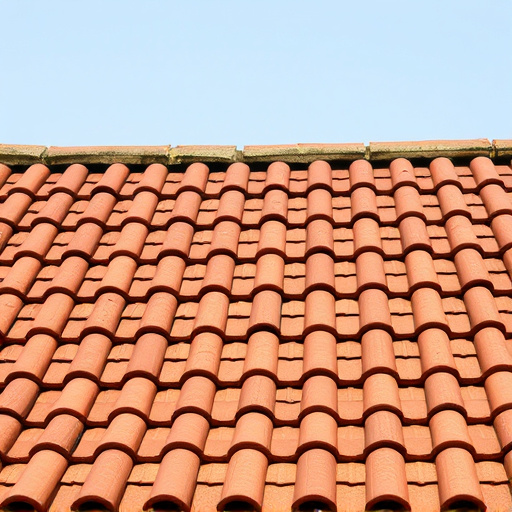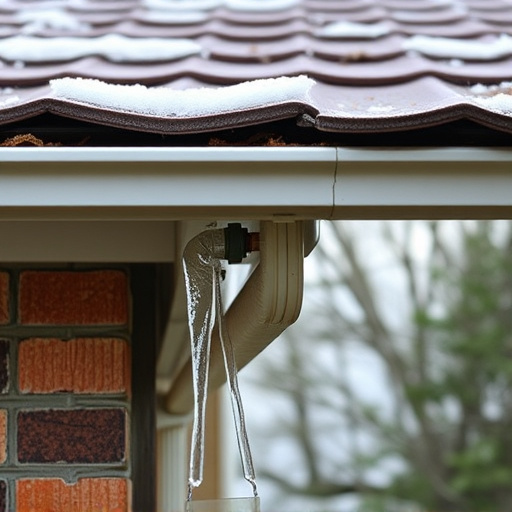Low-Maintenance Siding Solutions: Durable, Popular, and Easy to Manage
Homeowners seeking low-maintenance siding solutions find a market overflowing with innovative option…….
In the realm of construction and architectural design, siding solutions have emerged as a pivotal aspect, offering both aesthetic appeal and functional benefits. This comprehensive article delves into the multifaceted world of siding, exploring its various forms, global impact, economic significance, technological innovations, regulatory landscape, challenges, and future prospects. By examining these elements, we aim to equip readers with an in-depth understanding of how siding solutions are shaping buildings and communities worldwide.
Siding, in its essence, refers to the exterior covering or cladding applied to buildings, primarily for protection against the elements but also as a design element. Siding solutions encompass a diverse range of materials and techniques used to clad walls, rooftops, and other architectural features. The core components include:
Materials: These vary from traditional options like wood, vinyl, aluminum, and fiber cement to innovative materials such as composite panels, concrete, and even recycled plastics. Each material offers distinct advantages in terms of durability, maintenance, insulation, and visual appeal.
Installation Techniques: The methods for installing siding range from hand-nailing or screwing individual boards to utilizing specialized tools for seamless installation of larger panels. Modern innovations include mechanical fasteners, precision cutting tools, and advanced attachment systems that ensure faster, more efficient installations.
Design and Aesthetics: Siding solutions contribute significantly to the overall look and feel of a structure. They can mimic traditional textures like wood grain or brick, offer contemporary styles, or even create dramatic visual effects through unique shapes, colors, and patterns.
Historically, siding has evolved from natural materials like wood and stone to modern synthetic alternatives. The development of advanced materials and installation techniques has revolutionized siding, making it more durable, low-maintenance, and environmentally friendly.
Siding solutions have a profound global impact, influencing both residential and commercial construction across diverse regions:
North America: Known for its adoption of high-quality vinyl and fiber cement siding, North America leads in terms of innovation and awareness of energy-efficient cladding options. The region’s stringent weather conditions have driven the demand for durable and weatherproof siding materials.
Europe: European markets showcase a blend of traditional and modern siding styles, with wood, aluminum, and composite materials gaining popularity. Stringent environmental regulations have prompted the adoption of eco-friendly siding options, such as recycled content and low-carbon footprint materials.
Asia Pacific: Rapid urbanization and growing middle-class populations in Asia drive the demand for affordable yet aesthetically pleasing siding solutions. Vinyl and PVC siding are increasingly popular due to their cost-effectiveness and ease of installation.
Latin America and Middle East: These regions exhibit a mix of traditional brick and stone cladding, alongside modern vinyl and aluminum siding options. The focus on energy efficiency and weather protection is shaping the choice of materials and designs.
Global trends highlight several key factors:
| Trends | Impact |
|---|---|
| Sustainability: Increasing preference for eco-friendly materials, recycled content, and low-carbon emission products. | Promotes environmentally conscious construction practices worldwide. |
| Energy Efficiency: Focus on improving insulation and reducing heat transfer for energy conservation. | Drives the adoption of advanced materials like high-performance insulation panels and vapor barriers. |
| Aesthetics and Customization: Growing demand for personalized designs, unique colors, and customized patterns. | Enables architects and builders to create visually stunning structures that cater to individual preferences. |
| Lightweight and Durable Materials: The need for lightweight yet robust cladding options to withstand extreme weather events. | Leads to the exploration of advanced composite materials and innovative design solutions. |
The siding solutions market is a significant contributor to the global construction industry, with several economic aspects shaping its dynamics:
Market Size and Growth: According to a recent report by Market Research Future (MRFR), the global siding market is projected to reach USD 28.5 billion by 2027, growing at a CAGR of 6.5% from 2020 to 2027. This growth is attributed to rising construction activities, increasing urbanization, and the need for energy-efficient buildings.
Investment Patterns: The market attracts significant investments from both private and public sectors. Governments worldwide are allocating funds for infrastructure development, including the retrofitting of existing buildings with modern siding solutions to improve energy efficiency.
Cost Analysis: Siding materials vary widely in terms of cost, influenced by factors like material type, quality, and regional availability. For example, vinyl siding is often considered a budget-friendly option, while premium wood grain composites or natural stone cladding can be significantly more expensive. Installation costs also vary based on complexity, local labor rates, and the chosen installation method.
Supply Chain and Distribution: The supply chain for siding solutions involves raw material suppliers, manufacturers, distributors, and retailers. Efficient distribution networks are crucial to ensure timely delivery of materials to construction sites, especially in regions with seasonal weather patterns impacting construction schedules.
Technological innovations play a pivotal role in shaping the future of siding solutions:
Smart Siding: Emerging technologies are integrating intelligence into siding materials, enabling them to respond to environmental stimuli or monitor building health. For instance, smart siding panels can adjust their insulation properties based on temperature changes or detect structural integrity issues through built-in sensors.
3D Printing and Customization: Additive manufacturing techniques offer unprecedented customization options for siding. 3D printing allows for the creation of complex geometric shapes, unique patterns, and highly customized designs, pushing the boundaries of traditional cladding methods.
Advanced Coatings: New generation coatings provide enhanced durability, corrosion resistance, and self-cleaning properties. These coatings can extend the lifespan of siding materials, reduce maintenance requirements, and improve overall aesthetics over time.
Digital Design Tools: Software applications are revolutionizing the design process by enabling architects and builders to visualize and simulate siding solutions in 3D. These tools allow for real-time adjustments, collision detection, and clash-free designs, streamlining construction projects.
Regulatory frameworks significantly influence the adoption of siding solutions, ensuring safety, quality, and environmental standards:
Building Codes: Local building codes and regulations dictate the acceptable types of siding materials, installation methods, and performance criteria. These guidelines ensure that buildings meet minimum safety and energy efficiency standards. For example, in regions prone to severe weather, stricter requirements for impact resistance and wind load ratings may apply to siding materials.
Environmental Standards: Many countries have implemented regulations promoting the use of environmentally friendly construction practices. These include policies encouraging the utilization of recycled content, low-VOC (Volatile Organic Compound) emissions, and sustainable sourcing of raw materials in siding products.
Energy Efficiency Mandates: To reduce carbon footprints and promote energy conservation, governments worldwide have introduced energy efficiency standards for buildings. Siding solutions play a crucial role in achieving these goals by improving building insulation, reducing heat transfer, and enabling more efficient heating and cooling systems.
Product Certifications: Independent certifications, such as those from Underwriters Laboratories (UL) or the Forest Products Association (FPA), ensure product quality, safety, and environmental responsibility. These certifications provide assurance to builders and consumers about the performance and sustainability of siding materials.
Despite its numerous benefits, the siding solutions industry faces several challenges and criticisms:
Material Sustainability: While efforts to develop eco-friendly materials are increasing, concerns persist regarding the long-term environmental impact of certain synthetic cladding options. The disposal and recycling of these materials remain critical issues that require innovative solutions.
Installation Complexity: Some advanced siding technologies or custom designs may demand specialized skills for installation, leading to higher labor costs. Ensuring proper training and certification for installers is essential to maintain quality and safety standards.
Weather-related Damage: Extreme weather events can pose challenges to even the most durable siding materials. High winds, intense rainfall, and storms can lead to damage or failure of cladding systems, requiring robust design considerations and regular maintenance.
Visual Impact and Community Concerns: In densely populated areas, new construction or retrofits with significant siding changes may face community opposition due to concerns about visual aesthetics and neighborhood character. Balancing the desire for personalized design with community preferences is a ongoing challenge.
A recent high-rise residential building project in Chicago showcased an innovative approach to siding using recycled content composite panels. The developers aimed to create an environmentally friendly structure while maintaining a modern aesthetic. By utilizing advanced composite materials, they achieved exceptional insulation properties, reduced energy consumption, and minimized construction waste. The project’s success lies in its ability to merge sustainability with design appeal, setting a benchmark for future eco-conscious high-rise developments.
In the historic French Quarter of New Orleans, a restoration project focused on preserving the area’s unique architectural character through traditional siding techniques. The builders hand-crafted wood clapboard siding to match the region’s distinctive style. This case study highlights the importance of cultural preservation and the role of skilled craftsmanship in creating visually stunning and contextually appropriate buildings.
A California-based builder implemented a comprehensive energy-efficient siding solution for a suburban family home. The project featured fiber cement siding with built-in insulation, along with a smart climate control system. This integration improved the building’s R-value significantly, reducing heating and cooling costs. The case demonstrates how advanced siding materials and technology can contribute to sustainable living while enhancing a property’s value.
The future of siding solutions looks promising, with several emerging trends shaping the industry:
Smart Buildings and Internet of Things (IoT): As buildings become increasingly connected, siding solutions will play a critical role in enabling IoT integration. Sensors embedded within cladding can monitor structural health, temperature, humidity, and more, providing valuable data for predictive maintenance and energy management.
Modular Construction: Pre-fabricated modular building systems are gaining popularity due to their speed, cost-effectiveness, and quality control. Siding solutions tailored for modular construction offer efficient installation and seamless design continuity between modules.
3D Printed Cladding: While still in the experimental phase, 3D printed siding holds promise for rapid prototyping, on-site fabrication, and highly customized designs. This technology could revolutionize construction, especially in remote or challenging locations.
Bio-based Materials: Researchers are exploring the use of bio-based polymers and composites derived from renewable resources like plant fibers and algae. These materials offer potential environmental benefits while providing equivalent performance to traditional synthetic options.
Siding solutions have evolved from mere functional elements to powerful tools for enhancing architectural design, energy efficiency, and sustainability. As the construction industry navigates an era of rapid urbanization, climate change concerns, and technological advancements, siding will continue to play a pivotal role in defining buildings’ performance, aesthetics, and longevity. By embracing innovative materials, technologies, and regulatory frameworks, the industry can address current challenges and unlock new possibilities.
Q: How do I choose the best siding material for my home?
A: Consider factors like climate, budget, maintenance preferences, and desired aesthetics. Research local building codes and consult with professionals to select materials that meet your specific needs and ensure long-term performance.
Q: Are there any environmental benefits to using siding solutions?
A: Absolutely! Siding options with recycled content, low-VOC emissions, and energy-efficient properties contribute to reduced carbon footprints and sustainable construction practices. Choosing eco-friendly materials supports environmentally conscious building design.
Q: Can siding be easily repaired or replaced if damaged?
A: Most siding materials offer excellent durability, but repairs or replacements may vary. Some composite and fiber cement sidings can be repaired with specialized kits, while others might require complete replacement. Regular maintenance and inspections are key to minimizing damage.
Q: How do I ensure the longevity of my siding investment?
A: Proper installation, regular cleaning and inspection, and prompt repair of any damage are essential. Follow manufacturer guidelines for maintenance, use suitable coatings or sealers, and stay informed about advances in siding technology to maximize the lifespan of your cladding system.
Q: Are there any incentives or grants available for installing energy-efficient siding?
A: Yes, many governments offer incentives, rebates, or tax credits for energy-efficient home improvements, including siding. Check local programs and consult with builders or professionals specializing in energy-efficient construction to take advantage of these benefits.

Homeowners seeking low-maintenance siding solutions find a market overflowing with innovative option…….

Historic homes require specialized siding solutions that preserve their architectural charm, balanci…….